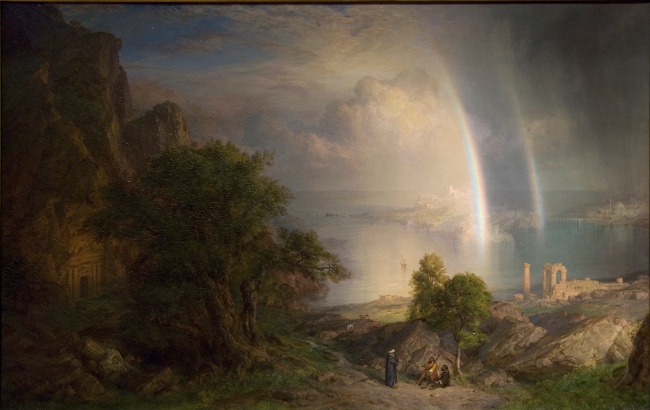
Aegean Sea
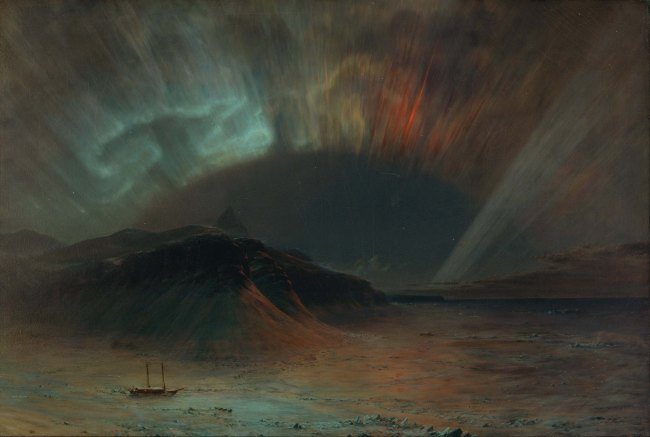
Aurora Borealis
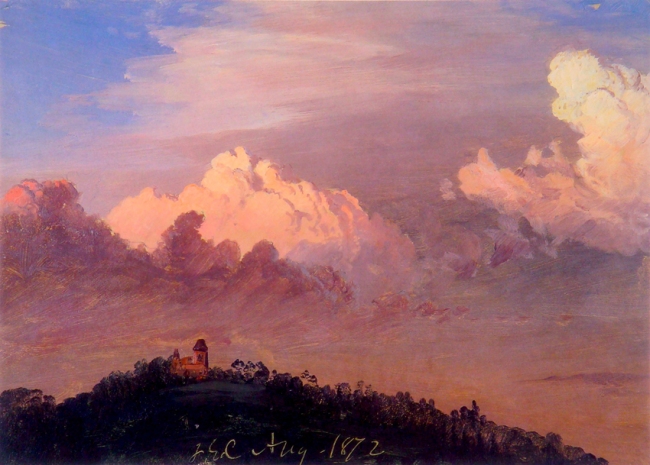
Clouds over Olana
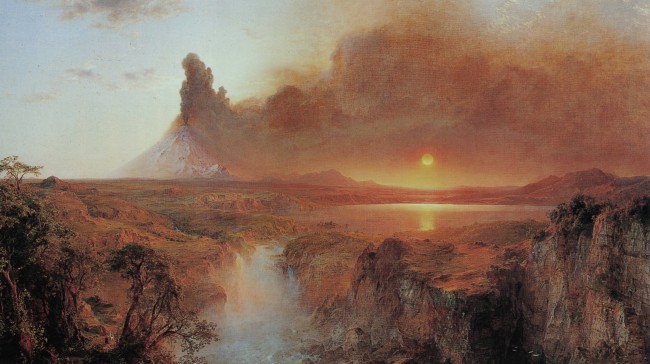
Cotopaxi

El Rio De Luz The River of Light
Frederic Edwin Church (May 4, 1826 – April 7, 1900) was an American landscape painter born in Hartford, Connecticut. He was a central figure in the Hudson River School of American landscape painters. While committed to the natural sciences, he was “always concerned with including a spiritual dimension in his works.” At eighteen years of age, Church became the pupil of Thomas Cole in Catskill, New York. introduced the two. Church settled in New York where he taught his first pupil, William James Stillman. From the spring to autumn each year Church would travel, often by foot, sketching. He returned each winter to paint and to sell his work.
In 1853 and 1857, Church traveled in South America. One trip was financed by businessman Cyrus West Field, who wished to use Church’s paintings to lure investors to his South American ventures. Church was inspired by the Prussian explorer Alexander von Humboldt’s Cosmos and his exploration of the continent; Humboldt had challenged artists to portray the “physiognomy” of the Andes. Two years after returning to the US, Church painted The Heart of the Andes (1859), now in the collection of the Metropolitan Museum of Art, at the Tenth Street Studio in New York City. It is more than five feet high and nearly ten feet in length. Church unveiled the painting to an astonished public in New York City in 1859. The painting’s frame had drawn curtains fitted to it, creating the illusion of a view out a window. The audience sat on benches to view the piece and Church strategically darkened the room, but spotlighted the landscape painting. Church also brought plants from a past trip to South America to heighten the viewers’ experience. The public were charged admission and provided with opera glasses to examine the painting’s details. The work was an instant success. Church eventually sold it for $10,000, at that time the highest price ever paid for a work by a living American artist.
Church showed his paintings at the annual exhibitions of the National Academy of Design, the American Art Union, and at the Boston Art Club, alongside Thomas Cole, Asher Brown Durand, John F. Kensett, and Jasper F. Cropsey. Critics and collectors appreciated the new art of landscape on display, and its progenitors came be to called the Hudson River School.
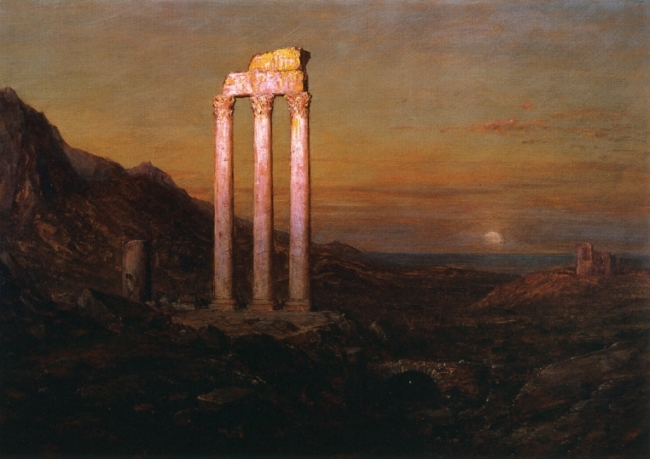
Moonrise
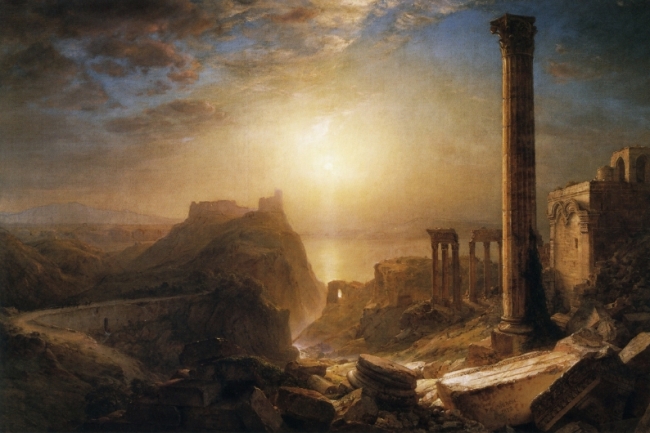
Syria by the Sea
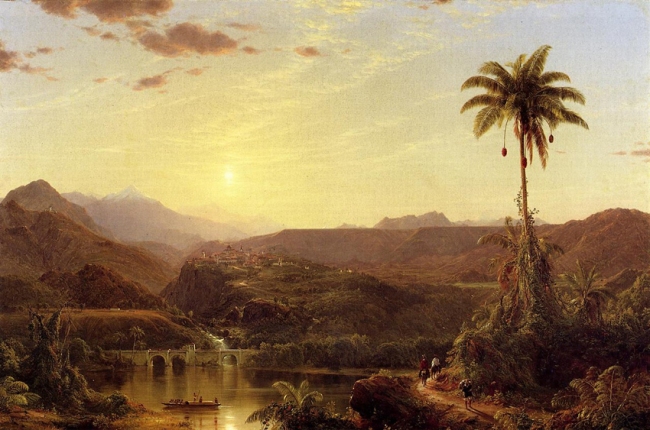
The Cordilleras, Sunrise
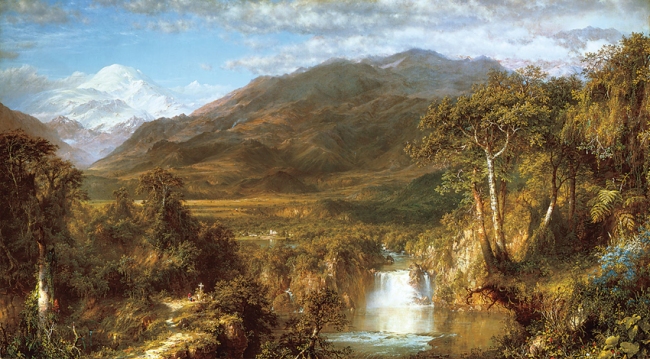
The Heart of the Andes
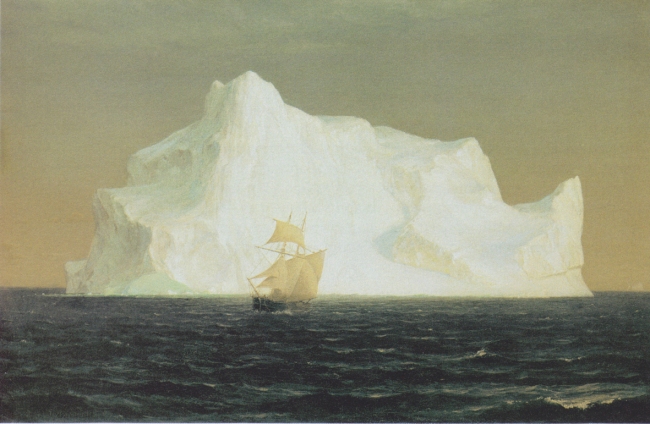
The iceberg
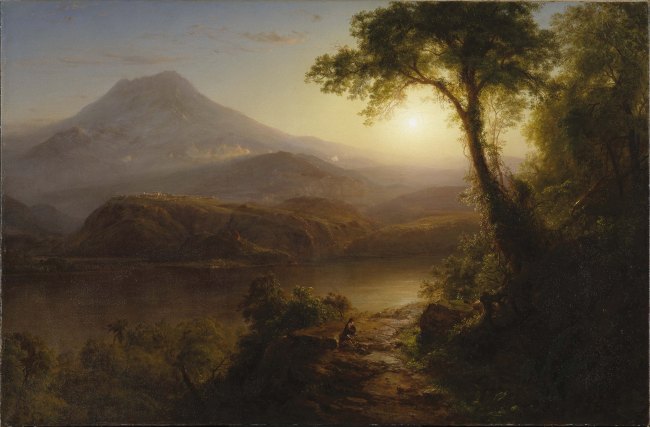
Tropical Scenery
Frederic Edwin Church (Hartford, 4 de mayo de 1826 – Nueva York, 7 de abril de 1900) fue un pintor paisajista estadounidense. Fue una figura central de la Escuela del río Hudson de pintores paisajistas estadounidense. Fue alumno de Thomas Cole en Palenville, New York. Se le conoció, sobre todo, por pintar vistas colosales, a menudo en ubicaciones exóticas.
Su pintura Corazón de los Andes, actualmente en la colección del Museo Metropolitano de Arte mide 1,5 m × 3 m. Frederic Edwin Church No solo se centro en los paisajes de su paìs sino que también viajo a Sudamérica pintando lo que quizás sea su obra más conocida

Such stunning realism!